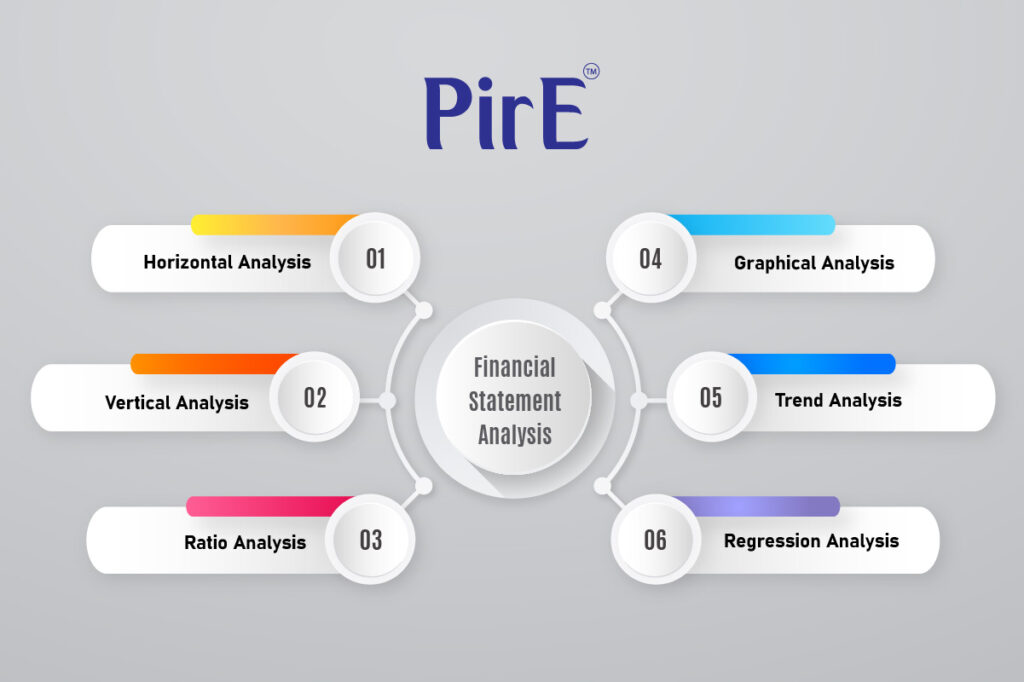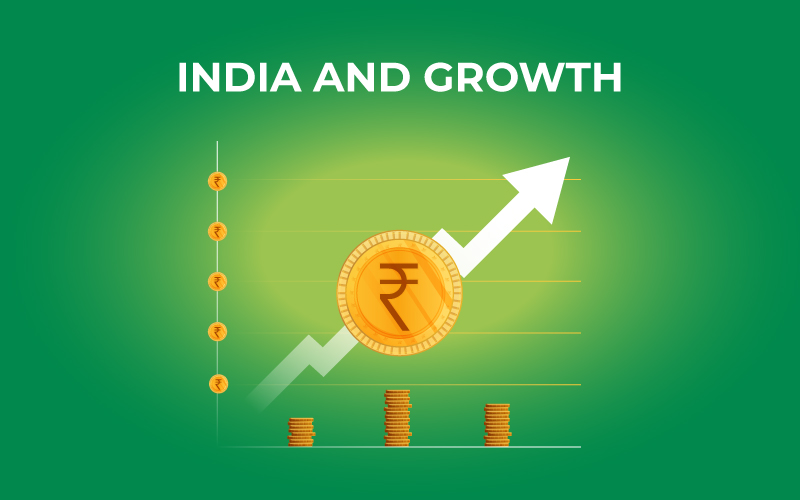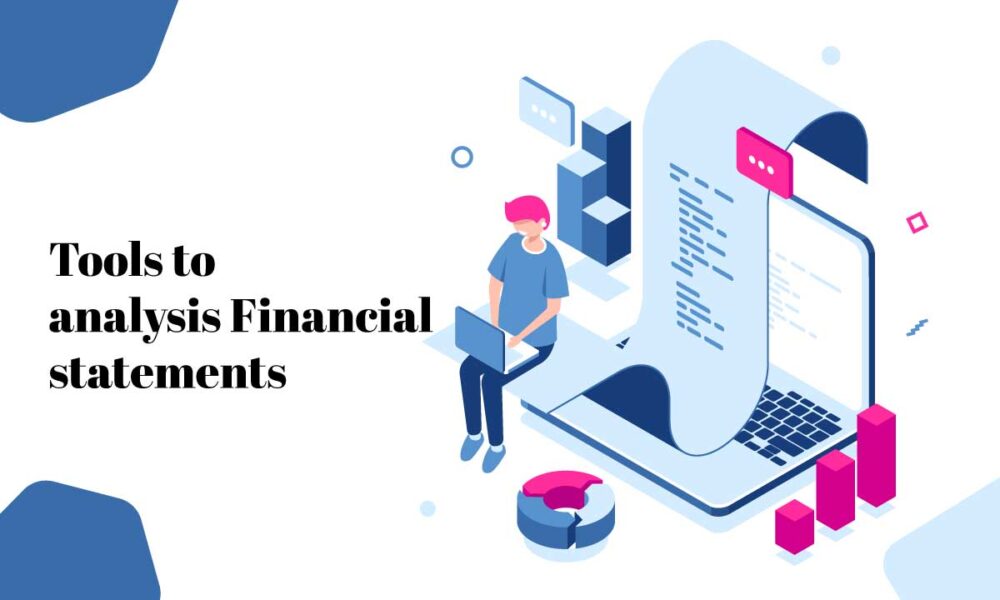Author: admin
NPS- National Pension Scheme
The National Pension Scheme (NPS) is a retirement plan supported by the government. The scheme was first introduced to government workers in January 2004. It was, however, made accessible to all sections in 2009. Throughout their working lives, participants of the plan are permitted to make regular contributions to a pension account.
In addition to withdrawing a portion of the accumulated pension wealth as a lump sum, if they so desire, the subscribers may use the accumulated pension wealth under the scheme to buy a life annuity from a PFRDA-empaneled life insurance business at the time of normal retirement from NPS. The lead organization for implementing and overseeing NPS is PFRDA. Do you know the entire pension amount is tax free
Who all can join?
Any Indian citizen between the ages of 18 and 60 can enroll in the National Pension Scheme NPS. The individual must adhere to know your customer (KYC) standards as the only requirement.
A NRI can also be a participant of an NPS scheme. However if there is any change in the citizenship status the account will be shut down.
How to Join NPS?
You need to open an NPS account with Point of Presence organizations (POP). The majority of banks, both private and public, are registered as POPs. Many banking organizations serve as POPs as well. The collecting points are the authorized POP branches, also known as POP-SPs (point of presence service providers).
They are available on the Pension Fund Regulatory and Development Authority’s website (PFRDA). https://www.npscra.nsdl.co.in/pop-sp.php
Benefits of joining NPS
- Low Cost: According to experts, NPS is the world’s least expensive pension plan. The lowest fees are for administration and fund management. The applicant only needs to open an account with any of the POPs offered by the Head Post Offices in India to obtain a Permanent Retirement Account Number (PRAN)
- Flexible: To maximize results, the applicant can choose his or her own investing strategy and pension fund, or they can select Auto.
- Portable: The applicant can manage an account from any location in the nation and make contributions through any POP-SPs, regardless of the POP-SP branch with which the applicant is registered, even if he or she changes their city, employment, or other details. They can also make contributions through eNPS.
Tax Benefits
The NPS scheme comes with few tax benefits listed below-
- Section 80CCD allows for a maximum of INR 1,50,000. (1). Additionally, the benefit is limited to 10% of the base wage. The maximum benefit under Sections 80C, 80CCC, and 80CCD(1) is INR 1,50,000.
- Contribution Section 80CCD allows up to Rs. 50,000. (1B). This goes beyond the Section 80C tax benefit. [43]
- Employee tax-free income under Section 80CCD includes employer co-contributions up to 10% of basic and DA without a dollar limit (2).
India and growth
India’s growth rate is among the fastest in the world, retail inflation has slowed, buffer food stockpiles are plentiful, forex reserves are sizable, and it is anticipated that the current account deficit would stay “well below sustainable levels.”
One of the key engines of India’s economic development historically has been domestic consumption, which is now rebounding strongly. The good news for business is this.
One, these numbers are probably going to increase much more as the holiday season draws near. Indian consumers typically spend more between August and January, when sales of everything from two-wheelers to real estate are at their highest. The results for the upcoming three quarters will probably be much better given how fast consumption has rebounded.
Two: India’s growth continues to be driven, for better or worse, by demand. Private spending makes for over 55% of the nation’s total GDP in a regular fiscal year. Additionally, it significantly affects Gross Fixed Capital Formation (GFCF), the following key economic engine that takes into account company investment spending. Strong domestic consumption thus unintentionally leads to robust economic growth.
Three, increasing home spending will increase demand across all businesses, particularly those where considerable sums are spent on luxuries. These range from candies and alcoholic drinks to computers and headphones, as well as apparel and beauty products. The demand for luxury items has exceeded the need for entry-level alternatives in several areas, such as vehicles.
The increasing consumer earnings and purchasing power; the average per capita income has already topped USD 2,000 and is anticipated to cross USD 10,000 by 2045. The luxury market is now more accessible to consumers because to the booming e-commerce industry and digital transactions. Furthermore, premium sectors are fast broadening to include Millennials and non-metro customers as consumers, historically dominated by HNWIs, have become more value- and custom-oriented. Due to the prevalence of remote and hybrid working methods, the usual cohort of HNI and NRI clients has also grown to include wealthy middle-class consumers in various areas, most notably luxury homes.
The most important conclusion is that Indian consumer markets would remain a top priority for international public and private equity investors. The market capitalization of existing and future enterprises will amount to hundreds of billions of dollars.
In conclusion, domestic demand will probably continue to be the main driver of India’s economic growth, with the discretionary spending of a rising group of “premium” consumers playing an increasingly important role. A major investment opportunity is presented by this trend.
Importance of Savings
One of the most important parts of accumulating wealth and ensuring a solid financial future is saving money. Saving money and doing investments gives you a route out of life’s uncertainty and allows you to live a more fulfilling life. Putting money away in a disciplined manner might help you avoid numerous pitfalls and roadblocks in life. It can assist you in your time of need and provide a safety net for your family in the event of an unforeseen incident. There are several reasons to save, as well as various simple ways to do it.
Everyone, regardless of their income, spending habits, or life stage, needs to save to be safeguarded from future uncertainties. Here are a few reasons why you should begin saving immediately.
Provides peace of mind
Knowing that you have a certain amount saved up for a rainy day provides you with peace of mind. You live a stress-free existence knowing that if things go awry, you won’t have to fight. Is not advisable to invest all your money and savings in financial instruments or in the market, some portion should be kept as in case of emergency.
Ensures a more prosperous future for you
Savings can help you achieve many of your objectives. You can use the money to buy a house, put money down for retirement, or buy a car. You may plan for your future, enjoy the most that life has to offer and live a life that is extremely satisfying. Before this you need to evaluate your earnings, how much you should save and how much you can spend.
Covers the aspects of your children’s education
You may fund your children’s goals and pay for the greatest schools and institutions in the world with a significant amount of funds.
Short-term goals
Savings are not just for the long term future needs. You also benefit from short-term savings. Many individuals save for a few months and then go on vacation or invest in some reliable shares. Short term investments are equally important for an individual as long term investments are.
Ensures your family’s safety in the event of a disaster
You may ensure that your family is well-provided for by saving in a disciplined manner. In the event of an emergency, your savings can provide a buffer for your loved ones, allowing them to overcome any financial difficulties.
India’s Gross Domestic savings is at 29.3%( % of GDP) as of 2021. While in 2010 India’s Gross Domestic savings was at 34.3%, a downward trend has been observed from the past decade. According to the experts, an upward trend is expected for the coming next 5 years.
The first step toward achieving financial security is saving money. Develop wise saving practices to safeguard both your current and future financial lives and gain control over your money. Create the practise of automating your investments and savings to lessen the temptation of unforeseen costs. By choosing the correct combination of assets, you may make your savings work for you and quickly fulfill all of your financial objectives.
Momentum investing
A trading method known as momentum investing involves buying stocks when they are rising and selling them when they appear to have peaked.
The objective is to manage volatility by looking for purchasing opportunities during brief uptrends and then selling when the momentum of the stocks begins to wane.
The investor then uses the money to search for the subsequent brief rally or purchasing opportunity, and the process is repeated.
Expert traders can respond to short-term, news-driven surges or selloffs. They know when to start a position, how long to hold it for, and when to abandon it.
Initiating a position too soon, exiting a position too late, and being preoccupied and missing important trends and technical deviations are risks associated with momentum trading.
When investing with momentum, decisions are made based on a plan to profit from the current price movement. Changes in the technical indicators of the price movement of the company’s shares are taken into account while making decisions. Taking advantage of short-term stock price volatility is the goal of momentum investing. It’s like a momentum investor is soaring along the crest of an ocean wave before jumping to the next one before the previous one falls down once more.
Key Elements:
To deal with volatility, crowding, and secret traps that lower returns, trading momentum markets require complex risk management procedures. Market participants frequently disregard these guidelines because they are paralysed by the worry that they will miss the rally or selloff while everyone else makes windfall profits.
There are five components to the rules:
- Selection, or the stocks you select
- The timing of when trades are opened and closed is a major source of risk
- Entry timing refers to entering the deal first
- Wide spreads and your holding term are combined by position management
- Consistent charting is required for exit points
When using momentum methods, pick equities that are liquid. Avoid leveraged or inverse ETFs because of the intricate fund architecture that causes their price movements to inaccurately reflect the underlying indices or futures markets. Although they constitute good trading vehicles, regular funds often have lesser percentage gains and losses than individual stocks.
When feasible, look for equities that trade in million shares every day. Even low float issues can become extremely liquid when news flow and strong emotional reactions draw in market participants from many sources. Many popular equities satisfy these conditions.
However momentum trading is not for everyone, when done correctly, it can frequently produce significant results. Trading in this manner requires extreme discipline since transactions must be closed at the first indication of weakness and the funds must be transferred right away into another trade that is displaying strength.
Tools to analysis Financial statements
Financial statement analysis is the process of examining a company’s financial statements in order to make decisions. This analysis is used by external stakeholders to assess an organization’s general health as well as its financial performance and market value. It serves as a monitoring tool for handling finances for internal stakeholders.
Internal and external stakeholders both utilize financial statement analysis to assess the worth and performance of an organization.
All businesses are required by financial accounting to produce balance sheets, income statements, and cash flow statements, which serve as the foundation for financial statement analysis.
Financial statement analysis assesses a company’s balance sheet, income statement, or statement of cash flows to assess its performance.
Investors can create a more complex picture of a company’s financial profile by utilizing a variety of techniques such as-
- Horizontal analysis
- Vertical analysis
- Ratio analysis
- Trend analysis

Horizontal analysis
In horizontal analysis a company’s progress through time, performance from two or more periods is compared. To get a broad sense of trends, each item in a ledger is compared to the prior time frame.
There might be some components that are costing the company more if, for instance, the cost of final goods increases by 40% over the course of a year without being represented in the income generated.
Vertical analysis
Vertical analysis refers to establishing a correlation between several ledger line items with the aid of vertical analysis. It enables analysts to comprehend overall performance in terms of receipts and outlays. The outcomes are examined as a ratio.
Ratio evaluation
A general increasing or downward trend can be seen by comparing one financial component to another using ratio methods of financial analysis. Once the ratio has been determined, it can be compared to the prior period to determine whether the company’s performance is in line with predetermined goals. It enables management to identify any departure from expectations and implement remedial actions.
Trend evaluation
Trend analysis can be described as a mathematical method for predicting future outcomes based on historical data. One or more organizations for the same term, or another organization for a different period, may be the subject of a trend analysis. A trend is a collection of data from financial accounts that has been examined to draw useful conclusions.Analyzing trends over three or more time periods is beneficial. It considers the earliest year as the base period and accounts for gradual change trends. A financial statement’s shift will either show a rising or falling trend.
Interesting stock marketing slangs
Here are some interesting stock market slags that are used by stock marketers.
How many of these slags did you actually know?? Let’s explore these.
Bulls
Bulls used to explicitly relate to a market with an upward trend and a growth cycle, but they can now simply refer to an upbeat speculator who frequently makes long trades. Although there is no concrete evidence to support this, some people think that bull markets earned their name from the way bulls throw their enemies and spike their horns high.
Bears
A bear market, often known as a depressed and/or downward-trending market, is the opposite of a bull market. Similarly, a bullish trader or investor has optimistic views about a market, while bearish ones are gloomy.
White swans
Black swans, a phrase that has gained in use after Brexit, refer to an entirely unexpected and unforeseeable position. Black swans are as important as they are unexpected, and they must have a major influence on the market—often a negative one. The dot com bubble explosion in the 1990s and the world financial crisis of 2008 are two well-known examples of black swan events.
Whales
Whales are market movers and shakers with so much capital that their purchases and sales cause commotion in the marketplace in a way that only enormous animals can.
Unicorns
Startups that have grown to be valued at $1 billion or more are known as unicorns, one of the most recent words used here. Some people might cynically speculate that they were given their unusual names since it is impossible to ever find one.
Tigers
As one of the few words derived from an acronym, TIGR, or Treasury Investors Growth Receipt, tigers are unique. In the 1980s, Merrill Lynch bank developed and copyrighted this kind of Treasury bond. Although now mostly out of date, TIGRs were formerly well-liked because owners of “tiger” bonds were exempt from paying interest or taxes.
Fading
a trader who consciously veers away from trends or market sentiment. It is typically not advised for anyone other than the most seasoned market movers since, as traders like to say, “the trend is your friend.”
Inflate and dump
The unethical market manipulators employ the “pump and dump” strategy. By using techniques like bogus news, recommendations, and raving evaluations on a stock that they themselves have planted or created, they profit from a market’s upward trend. This is fraud, not a trading method. Fraudsters are imprisoned.
Importance of Investments
Investments guarantee both current and future financial security. It enables you to increase your wealth while also producing returns that outperform inflation. You also gain from compounding’s advantages.
Additionally, investments may help you achieve your financial objectives, including buying a home, saving for retirement, and creating an emergency fund, among others.
Instilling a practice of setting away a certain sum each month or annually for your investments helps you build financial discipline.
When Covid-19 came in 2020, people realized the value of investments and savings. The covid-19 pandemic rotated the lives of people by 360 degrees. Since then a substantial hike has been observed in investments and saving patterns of people worldwide.
A few reasons why Investments are important-
- Passive source of income
We have learned from the ongoing coronavirus problem that we can’t rely only on your monthly income. We may experience severe challenges if we are unable to generate our normal money for some reason.
You’ll need a second source of income to help you support yourself through times of crisis in order to reduce this risk. You can invest in fixed deposits, stocks, mutual funds, real estate, and other assets, among others. Even after your regular income stops, these investments will continue to provide returns for you, giving you the financial security you need to get by.
- Promotes monetary Independence
Are you concerned about relying on others for your financial requirements after retirement? Be at ease. By consistently making investments to build a retirement corpus, you can enjoy financial freedom in your old age. After retirement, you will be able to easily take care of your monthly costs and other demands thanks to the passive income you would receive from this corpus.
- Aids in fighting inflation
None of us can escape inflation; it is a reality of life. As time goes on, it lessens the purchase power of our money and makes us poorer. You could get into a lot of trouble if you don’t take action to solve this issue.
Investing the cash you have on hand right now is the best method to fend off the damaging effects of inflation. By consistently investing, you can outpace inflation and maintain your purchasing power.
- Tax incentives
Did you know that you might receive tax advantages from your investments as well? Under Section 80C of the Income Tax, a number of investment instruments, including PPF, ELSS, Tax Saving Bonds, and long-term fixed deposits, provide tax advantages.
Union budget 2022-23
The union budget 2022-23 lays emphasis on four areas, the FY 2022–23 seeks to improve the infrastructure.
- GatiShakti, PM
- National Development
- Sunrise prospects, energy transition, climate policy, and productivity improvement
- investing in financing
Giving states more financial liberty
- Increased expenditure for the current year’s “Scheme for Financial Assistance to States for Capital Investment” from Rs. 10,000 crore to Rs. 15,000 crore in the revised estimates
- Allocation of Rs. 1 lakh crore in 2022–23 to help the states spur economic growth: fifty-year interest-free loans on top of regular borrowings
- States will be permitted a budget deficit in 2022–2023 of 4% of the GSDP, of which 0.5% will be related to changes in the electricity sector.
Agriculture and related industries
- Direct payments of Rs. 2.37 lakh crore were made to 1.63 crore farmers to purchase wheat and paddy.
- no chemicals To encourage organic farming throughout the county. Farmers’ holdings in 5 Km broad riverside corridors are the initial emphasis.
- NABARD will facilitate a fund with blended capital to assist agricultural and rural businesses.
- “Kisan Drones” for crop evaluation, digitizing land data, and applying fertilizers and pesticides
Interlinking of the MSMEs & Industry Udyam
- Under the Emergency Financing Linked Guarantee Scheme (ECLGS), 130 lakh MSMEs received additional credit. The ECLGS would continue till March 2023.
- ECLGS’s guarantee cover will increase by Rs. 50000 crores, providing a total of Rs. 5 lakh crore.
- Under the Loans Guarantee Trust for Micro and Small Enterprises (CGTMSE) Raising and Accelerating MSME performance (RAMP) initiative, an extra Rs. 2 lakh crore in credit would be made available for M&S companies, with a planned rollout of Rs. 6000 crore.
Health
- To develop the National Tele Mental Health Program, an open platform for the National Digital Health Ecosystem, which will provide high-quality mental health counseling and treatment services.
- With NIMHANS serving as the nodal center and the International Institute of Information Technical-Bangalore (IIITB) providing technical assistance, a network of 23 tele-mental health centers of excellence would be established.
Best Tax Saving Investments for 2022
Savings are very crucial for everyone to have a secure future. Here are some benefits that help us to save tax and enjoy the benefits of the policy provided by the government of India.
1. Senior citizen saving scheme
SCSS or Senior citizen saving scheme is a saving scheme made especially for people above the age of 60 years delivering fairly significant returns and is a reliable and dependable source of income for their post-retirement era.
Section 80C of the Income Tax Act of 1961 permits standard deduction for principle deposits made into SCSS accounts up to a maximum of Rs. 1.5 lakh. This benefit, however, is only valid under the current tax laws. It is not permitted if a person decides to file tax returns using the new approach outlined in the Union Budget 2020.
However, the interest is subject to taxes according to the payer’s appropriate tax bracket.
2. Life insurance
It is a crucial component of a person’s financial plan since it provides protection to the person’s family in the event of an untimely death. The primary duty is to secure the family’s financial future rests with the earner.
Traditional life insurance and market-linked life insurance (ULIP) both provide tax advantages to policyholders on the money paid.
Life insurance products provide policyholders with tax advantages regardless of their nature.
Section 80C of the Income Tax Act covers life insurance premiums limited to a total of Rs. 1.5 lakhs. Under Section 10, gains on death or maturity are tax-free (D). Exemptions are applied to income and taxed appropriately if the policy is canceled within five years.
- Plans for the long term
- Planned endowments
- ULIPs
- cashback
3. Health insurance
The costs associated with an accident or hospitalization are covered by health insurance, or Mediclaim as it is more often called. In accordance with the promised sum, Mediclaim also covers pre and post-hospitalization costs.
Section 80D of the tax code provides advantages for health insurance. Tax benefits are available on insurance premiums up to Rs 20,000 for older persons and Rs 15,000 for everyone else. The insurer can claim a tax credit of Rs 35,000 (Rs 15,000 + 20,000) if he pays Rs 15,000 for his personal insurance and Rs 20,000 for his elder parent’s coverage. For amounts received under critical illness insurance plans, the maturity value is tax-free.
5. New Pension Scheme
The Pension Funds Regulatory and Development Authority, or PFRDA, oversees the NPS, or New Pension Scheme. It is open to all Indian citizens between the ages of 18 and 60. Due to the minimal fund management fees, it is very cost-effective for the public. Equity (E), Corporate Bonds (C), and G Government Securities are the three independent accounts that which the fund managers manage the money (G). Investors have the option of actively managing their portfolios or passively (auto choice).
Under Section 80CCD of the Income Tax Act, contributions made to the NPS are tax-deductible. Together with Sections 80C and 80CCC, this section’s combined deduction cap cannot exceed Rs 1.5 lakhs.
private investment firm seeking to build and raise empires
PirE ventures is a private investment firm seeking to build and raise empires.
PirE has created more than 3000 jobs and has a market value of 100 Million pounds. PirE has professional and experienced leaders who help the firms grow and achieve success in the long run. PirE helps startups in every field to grow and learn with the latest technological advancements and knowledge. Together at PirE, we seek to grow together with our motto Partner- Build- Grow.
At PirE we ensure our partners have access to a wholesome and thorough deal that will help to improve and flourish their businesses. Our foremost goal is to provide our clients with financial assistance for them to achieve a higher level of success and create a new and viable venture for themselves.
PirE is growing by investing in opportunities, communities, and our people in order to assist investors to achieve outstanding results while also making a good social impact. We encourage innovation and creativity that we can see as opportunities where others don’t.
We are having a wide portfolio-
- Real estate
- Healthcare
- Startups
- Niche manufacturing
- Consumer staples
Real estate
We have several years of experience in the real estate world. What makes us unique and a leading investment entity in the real estate sector is our integrated approach that includes extensive monetary support that will help our clients with a safety net and in the process create a sustainable business model and drive revenue growth. What makes us unique and a leading investment entity in the real estate sector is our integrated approach that includes extensive monetary support that will help clients with a safety net and in the process create a sustainable business model and drive revenue growth.
Healthcare
The health sector has witnessed dynamic growth in recent times and therefore, has managed to pique the interest of both global and local investors. PirE boasts of accurate industry knowledge, which makes it a trusted firm when it comes to such an active sector as healthcare. Our goal is to deploy significant and timely capital to assist our clients in building strong and successful healthcare companies.
Startups
PirE tends to help innovative entrepreneurs expand their businesses by providing them with capital, mentorship, and support. We are a sector-neutral fund that works with entrepreneurs that have a clear path to scalability and sustainability. We seek to develop a genuine engagement with entrepreneurs by using the benefits of a diverse business network. We embrace the grind needed to bring extraordinary products and newer companies to life.
Niche manufacturing
We are focused on investing in and building niche-market leaders at the lower end of the middle market and our mission is to partner with exceptional management teams to build world-class businesses and drive remarkable value for our clients using efficient financial resources.
Consumer Staple
We seek to create value and add insight to a wide spectrum of FMCG firms by employing our financial expertise. We believe in a value-oriented investment strategy that will help the daring build strong businesses. In this sector, the profits may be gradual but are reliable and hence long-term. Our role is to support our clients and help them to see the gains in it.
- ‹ Previous
- 1
- 2
- 3
- 4
- Next ›










